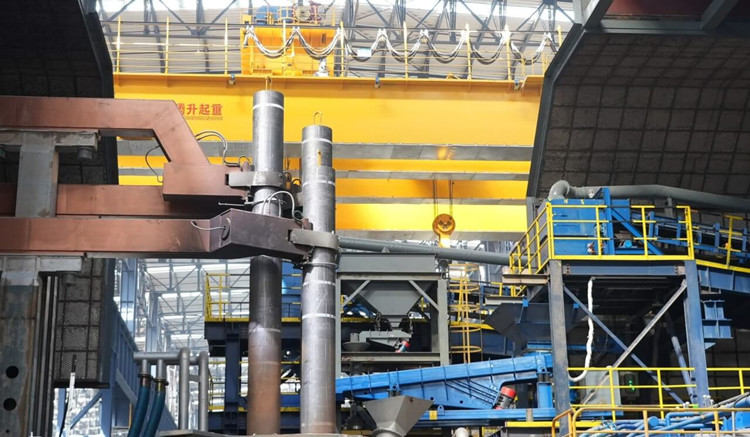- tyler@kirail.com
- +86 15603721115
Forged parts can be formed with a hammer or a press. Hammer forging is performed by repeated blows in successive cavities. The quality of the forgings and the economy and productivity of the hammer forging process depend on the tools and the skills of the operator. In press forging, the blank is usually struck only once in each cavity, and the design of each cavity becomes more important, while the skills of the operator are less important. The continuous development of forging technology requires a comprehensive and fundamental understanding of the performance and characteristics of the equipment. The equipment used in forging, such as presses and hammers, affects the forging process because it affects the deformation rate and temperature conditions and determines the productivity. The requirements of a specific forging process must be compatible with the load, energy, time and precision characteristics of a specific forging machine.

1. Hammer forging
The most common type of forging equipment is the hammer anvil. Hammer forging is the cheapest and most versatile equipment for generating load and energy for the forging process. The technology is characterized by multiple impact blows between contoured dies. Hammers are mainly used for hot forging. There are basically two types of anvil hammers: gravity drop hammers and power drop hammers. In a simple gravity drop hammer, the upper ram is connected to a wooden board (wooden board drop hammer), a belt (belt drop hammer), a chain (chain drop hammer) or a piston (oil pressure, pneumatic or steam lift drop hammer). The ram is lifted to a certain height and then falls onto the blank placed on the anvil. During the downstroke, the ram is accelerated by gravity and accumulates the striking energy. The upstroke follows the strike. The working principle of the power drop hammer is similar to that of the air drop hammer. During the downstroke, in addition to gravity, the ram is accelerated by steam, cold air or hot air pressure. In the power drop hammer, the acceleration of the ram is enhanced by applying air pressure to the top of the ram cylinder. The mechanical plate hammer is a machine with limited stroke. The friction roller repeatedly lifts the wooden board (weight) and then drops it onto the die. Its power rating depends on the weight of the hammer and the energy output. The steam hammer uses steam in a piston and cylinder device. It has a greater forging capacity. It can produce forgings from a few kilograms to several tons. It is the first choice for closed die forging.
2. Press forging
In press forging, the metal is not formed by a series of blows, as in hammer forging, but by a single, continuous squeezing action. There are two main types of press forging: mechanical and hydraulic. Mechanical press forging produces a preset (predetermined force at a specific position in the stroke) and repeatable stroke by using a cam, crank and/or toggle mechanism. Due to the nature of this system, different forces can be obtained at different stroke positions. Mechanical press forging is faster than hydraulic press forging (up to 50 strokes per minute). Its capacity ranges from 3 to 160 MN (300 to 18,000 short tons force). Hydraulic press forging uses fluid pressure and a piston to generate force. The hydraulic press forging is a load-limited machine. Its squeezing action is greater than the hammering action. Therefore, the die can be smaller and have a longer service life compared to a hammer. Features of hydraulic presses: Maximum clamping load is achieved throughout the entire stroke of the ram, and the ram speed can be controlled and adjusted during the stroke; due to its slow speed, the contact time is longer and the die temperature is also higher; the slow squeezing action allows for smaller tolerances of forgings; its initial cost is higher compared to hammer presses. The advantages of hydraulic presses over mechanical presses are their flexibility and greater production capacity. Its disadvantages include slower speed, larger size and higher operating costs.